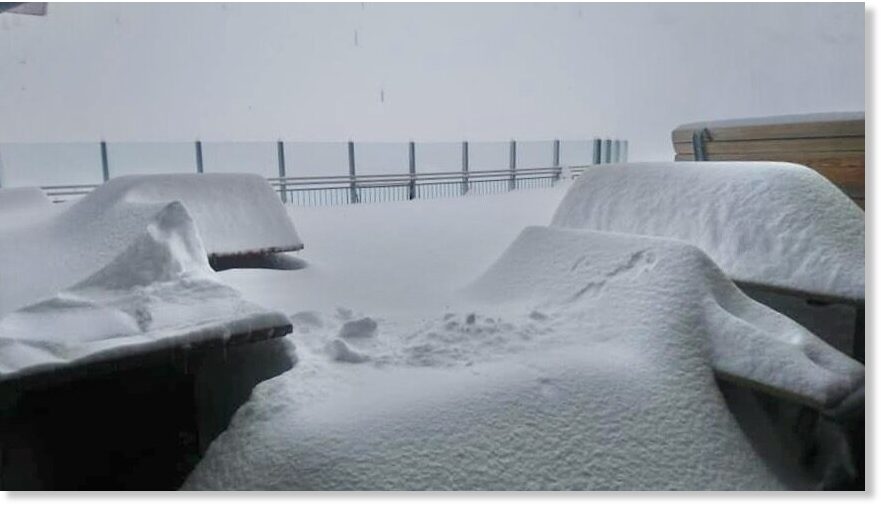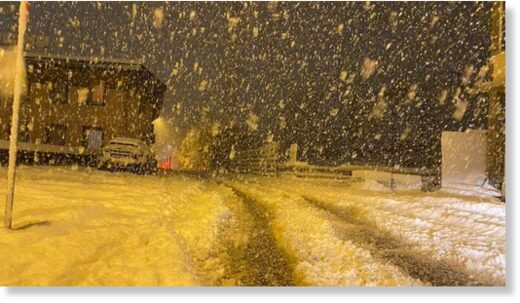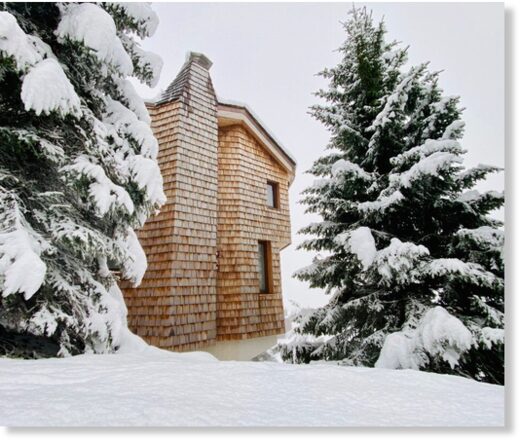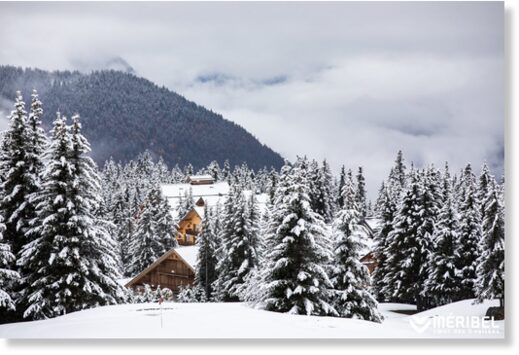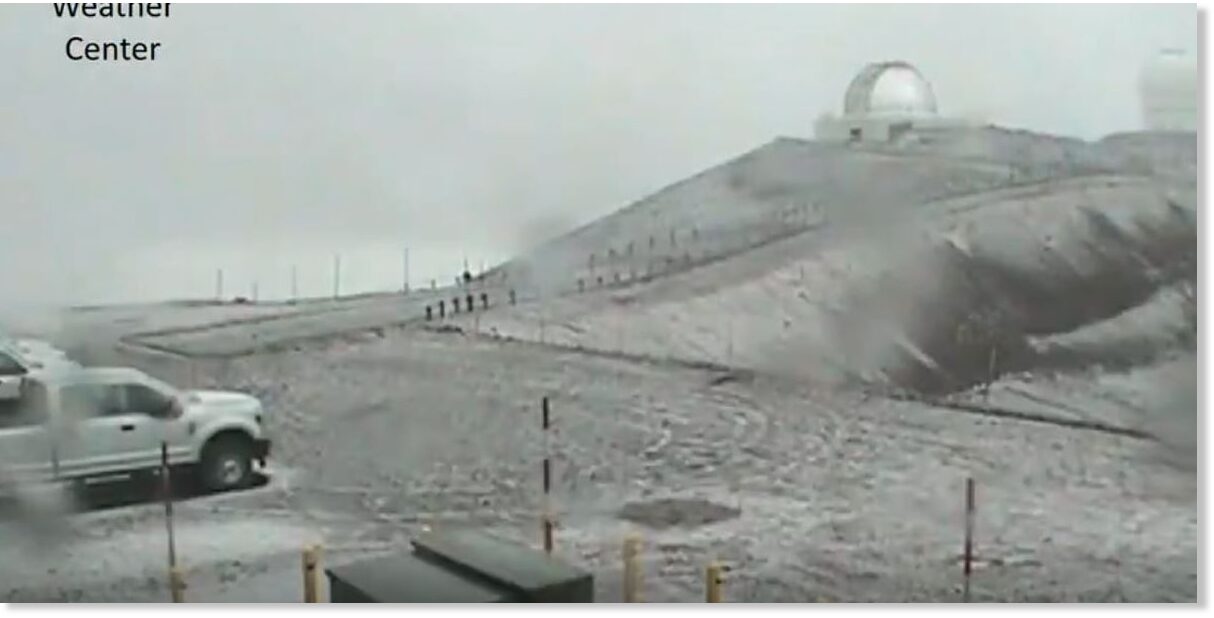Total snow accumulations of 8 to 16 inches. Some areas up to 20 inches. Possible power outages. Near white-out conditions. Travel could be very difficult to impossible. Wind temps to minus 25F (-31.7C). National Weather
www.iceagenow.info
Blizzard warning for Montana – Major WINTER storm
October 24, 2020 by
Robert
Total snow accumulations of 8 to 16 inches. Some areas up to 20 inches. Possible power outages. Near white-out conditions.
Travel could be very difficult to impossible. Wind temps to minus 25F (-31.7C).
National Weather Service Great Falls MT
151 PM MDT Fri Oct 23 2020
Northern Rocky Mountain Front-Eastern Glacier-Eastern Pondera-Southern Rocky Mountain Front-Eastern Teton
Including Logan Pass, Browning, Heart Butte, Cut Bank, Brady, Conrad, Bynum, Choteau, Augusta, Fairfield, and Dutton
…BLIZZARD WARNING UNTIL 9 PM SATURDAY…
* WHAT… Total snow accumulations of 8 to 16 inches, with isolated amounts approaching 20 inches in the mountains.. Winds gusting as high as 40 mph.
* WHERE…Northern Rocky Mountain Front, Eastern Glacier, Eastern Pondera, Southern Rocky Mountain Front and Eastern Teton.
* WHEN…Until 9 PM MDT Saturday.
* IMPACTS…Travel could be very difficult to impossible, especially through early Saturday afternoon. Widespread blowing snow could significantly reduce
visibility. The cold wind chills as low as 25 below zero could cause frostbite on exposed skin in as little as 30 minutes.
………….
Heavy snow headed for Montana – some areas getting up to 20 inches, possible blizzard conditions and wind chills 25 below zero.
National Weather Service Great Falls MT
300 AM MDT Fri Oct 23 2020
Central and Southern Lewis and Clark-Eastern Pondera-
Southern Rocky Mountain Front-Eastern Teton-Judith Basin-Fergus-Jefferson-Broadwater-Meagher-
Including Logan Pass, Browning, Heart Butte, Cut Bank, Great Falls, Cascade, Belt, Kings Hill Pass, Fort Benton, Carter, Big Sandy, Helena, Flesher Pass, Lincoln, MacDonald Pass,
Rogers Pass, Brady, Conrad, Bynum, Choteau, Augusta, Fairfield, Dutton, Raynesford, Stanford, Hobson, Lewistown, Winifred, Lewistown Divide, Grass Range, Montana City, Boulder, Boulder Hill, Elk Park Pass, Homestake Pass, Whitehall, Toston, Townsend, Winston, Martinsdale, Deep Creek Pass and White Sulphur Springs
…WINTER STORM WARNING TO 9 PM SATURDAY…
* WHAT…Heavy snow expected. Total snow accumulations of 7 to 15 inches, with isolated amounts approaching 20 inches in the mountains. Winds gusting as high as 35 mph.
* WHERE…Portions of central, north central, southwest and west central Montana.
* IMPACTS…Travel could be very difficult to impossible. Widespread blowing snow could significantly reduce visibility. The cold wind chills as low as 20 below zero could cause frostbite on exposed skin in as little as 30 minutes.
* ADDITIONAL DETAILS…Near-whiteout conditions are possible tonight through Saturday afternoon. Western facing slopes of the island ranges could see locally reduced snowfall totals due to downsloping.
——————————————————————————————
National Weather Service Missoula MT
404 AM MDT Fri Oct 23 2020
Lower Clark Fork Region-
…WINTER STORM WARNING TO NOON SATURDAY…
* WHAT…Heavy snow expected. Total snow accumulations of 6 to 12 inches, with 12 to 18 inches above 4,000 feet, including Lookout Pass on I-90.
* WHERE…Evaro Hill, Highway 200 Thompson Falls to Plains, Highway 200 Trout Creek to Heron, and I-90 Lookout Pass to Haugan.
* IMPACTS…Travel will be very difficult. The combination of heavy snow and wind may lead to power outages. Blowing snow will significantly reduce visibility.
—————————————————————————————–
National Weather Service Missoula MT
404 AM MDT Fri Oct 23 2020
Northern Clearwater Mountains-Southern Clearwater Mountains-Bitterroot/Sapphire Mountains-
…WINTER STORM WARNING TO NOON SATURDAY…
* WHAT…Heavy snow expected. Total snow accumulations of 12 to 18 inches above 5000 feet. Below 5000 feet expect 5 to 10 inches in western Montana and 3 to 8 inches in the Clearwater Mountains of Idaho.
* WHERE…In Montana, the Bitterroot/Sapphire Mountains. In Idaho, Northern Clearwater Mountains and Southern Clearwater Mountains.
* IMPACTS…Travel will be very difficult. Blowing snow will significantly reduce visibility.
——————————————————————————————
National Weather Service Missoula MT
404 AM MDT Fri Oct 23 2020
Butte/Blackfoot Region-
…WINTER STORM WARNING TO 6 PM SATURDAY…
* WHAT…Heavy snow expected. Total snow accumulations of 9 to 14 inches at pass level, while valleys receive 6 to 10 inches. Winds gusting to 35 mph may cause whiteout conditions.
* WHERE…Butte, Georgetown Lake, Highway 12 Garrison to Elliston, Homestake Pass, and MacDonald Pass.
* IMPACTS…Travel will be very difficult to impossible. Blowing snow will significantly reduce visibility. Cold wind chills, as low as 20 below zero, could cause frostbite on exposed skin in as little as 30 minutes.
—————————————————————————————-
National Weather Service Missoula MT
404 AM MDT Fri Oct 23 2020
Missoula/Bitterroot Valleys-
…WINTER STORM WARNING TO NOON MDT SATURDAY…
* WHAT…Heavy snow expected. Total snow accumulations of 6 to 10 inches. Widespread wind gusts up to 30 mph, with locally higher wind gusts near the mouth of Hellgate Canyon. From 3 am to noon, blizzard-like conditions may occur in downtown Missoula, Rattlesnake Canyon, and in the northern Bitterroot valley.
* WHERE…Missoula/Bitterroot Valleys.
* IMPACTS…Travel will be very difficult to impossible. Areas of
blowing snow will significantly reduce visibility.
——————————————————————————————
National Weather Service Missoula MT
404 AM MDT Fri Oct 23 2020
West Glacier Region-
…WINTER STORM WARNING TO NOON MDT SATURDAY…
* WHAT…Heavy snow expected. Total snow accumulations of 3 to 7 inches in valley areas with 7 to 11 inches between Essex and Marias Pass on US Highway 2. Wind gusts up to 40 mph will create localized blizzard conditions in Bad Rock Canyon between 9 pm and 3 am MDT.
* WHERE…Bad Rock Canyon, Essex, Highway 83 Bigfork to Swan Lake, Marias Pass, and Polebridge.
* IMPACTS…Travel will be difficult. Areas of blowing snow will significantly reduce visibility. The cold wind chills as low as 25 below zero will cause frostbite on exposed skin in as little
as 30 minutes.
————————————————————————————–
National Weather Service Missoula MT
404 AM MDT Fri Oct 23 2020
Potomac/Seeley Lake Region-
…WINTER STORM WARNING TO NOON MDT SATURDAY…
* WHAT…Heavy snow expected. Total snow accumulations of 8 to 12 inches, with 12 to 20 inches above 5000 feet. Winds gusting as high as 35 mph.
* WHERE…Highway 200 Bonner to Greenough, Highway 83 Seeley Lake to Condon, and I-90 East Missoula to Bearmouth.
* WHEN…From noon Friday to noon MDT Saturday.
* IMPACTS…Travel will be very difficult. Areas of blowing snow will significantly reduce visibility. Cold wind chills, as low as 20 below zero, could result in hypothermia if precautions are not taken.
——————————————————————————————
National Weather Service Missoula MT
404 AM MDT Fri Oct 23 2020
Flathead/Mission Valleys-
…WINTER STORM WARNING TO NOON MDT SATURDAY…
* WHAT…Heavy snow expected. Total snow accumulations of 4 to 8 inches in the Flathead valley and along Flathead lake. Total snow accumulations of 6 to 12 inches in the Mission valley. Winds gusting as high as 40 mph will cause periods of blizzard-like conditions and could produce freezing spray on the southern end of Flathead Lake.
* WHERE…Flathead Lake, Flathead Valley, Mission Valley, and Polson.
* IMPACTS…Travel will be very difficult. Areas of blowing snow will significantly reduce visibility.
—————————————————————————————-
National Weather Service Billings MT
358 AM MDT Fri Oct 23 2020
Southern Big Horn-Bighorn Canyon-
Including the locations of Lodge Grass, Pryor, and Wyola
…WINTER STORM WARNING TO NOON MDT SUNDAY…
* WHAT…Heavy snow expected. Total snow accumulations of 6 to 10 inches.
* WHERE…Southern Big Horn and Bighorn Canyon.
* IMPACTS…Blowing snow and poor visibility will make travel very difficult. Expect wind chills to fall below zero by Saturday night.
——————————————————————————————
National Weather Service Billings MT
358 AM MDT Fri Oct 23 2020
Pryor/Northern Bighorn Mountains-
…WINTER STORM WARNING IN EFFECT FROM 9 PM THIS EVENING TO NOON MDT SUNDAY…
* WHAT…Heavy snow expected. Total snow accumulations of 10 to 15 inches. Winds gusting as high as 35 mph.
* WHERE…Pryor/Northern Bighorn Mountains.
* IMPACTS…Blowing snow and poor visibility will make travel very difficult. Expect wind chills to fall below zero by Saturday night.
—————————————————————————————-
National Weather Service Billings MT
358 AM MDT Fri Oct 23 2020
Musselshell-Northern Stillwater-Northern Park-Golden Valley-
Red Lodge Foothills-Judith Gap-Livingston Area-
Beartooth Foothills-Northern Sweet Grass-Northern Carbon-
Melville Foothills-Southern Wheatland-
Including the locations of Roundup, Melstone, Musselshell,
Columbus, Absarokee, Park City, Rapelje, Clyde Park, Wilsall,
Ryegate, Lavina, Red Lodge, Roberts, Roscoe, Judith Gap,
Livingston, Springdale, Fishtail, McLeod, Nye, Big Timber,
Joliet, Fromberg, Melville, Harlowton, Twodot, and Shawmut
…WINTER STORM WARNING TO NOON MDT SUNDAY…
* WHAT…Heavy snow expected. Total snow accumulations of 8 to 12 inches.
* WHERE…Portions of Central and South Central Montana.
* WHEN…From 6 PM this evening to noon MDT Sunday.
* IMPACTS…Blowing snow and poor visibility could make travel very difficult. Expect wind chills to fall below zero by Saturday night.
—————————————————————————————–
National Weather Service Billings MT
358 AM MDT Fri Oct 23 2020
Absaroka/Beartooth Mountains-Crazy Mountains-
Including the locations of Cooke City
…WINTER STORM WARNING TO 9 AM MDT SUNDAY…
* WHAT…Heavy snow expected. Total snow accumulations of 10 to 18 inches. Winds gusting as high as 35 mph.
* WHERE…Absaroka/Beartooth Mountains and Crazy Mountains.
* IMPACTS…Travel will become very difficult to impossible. Blowing snow and wind chills below zero will make outdoor activities dangerous.
—————————————————————————————-
National Weather Service Billings MT
358 AM MDT Fri Oct 23 2020
Northern Big Horn-Northeastern Yellowstone-
Southwestern Yellowstone-
Including the locations of Hardin, Crow Agency, Busby,
Pompeys Pillar, Custer, Billings, Laurel, Huntley, and Broadview
…WINTER STORM WARNING TO NOON MDT SUNDAY…
* WHAT…Snow expected. Heaviest late tonight through Saturday evening. Total snowfall accumulations of 6 to 10 inches.
* WHERE…Northern Big Horn and Yellowstone Counties.
* IMPACTS…Blowing snow and poor visibility on snowpacked roads will make travel very difficult. Expect wind chills to fall below zero by Saturday night.
—————————————————————————————–
National Weather Service Glasgow MT
256 AM MDT Fri Oct 23 2020
…SIGNIFICANT SNOW ACCUMULATIONS POSSIBLE THIS EVENING THROUGH SATURDAY EVENING…
A major winter storm will impact the area this evening through Saturday evening with significant accumulations of snow possible, particularly in Petroleum County.
Petroleum-Southwest Phillips-
Including the cities of Winnett and Zortman
…WINTER STORM WARNING TO 9 PM MDT SATURDAY…
* WHAT…Heavy snow expected. Total snow accumulations of 6 to 13 inches.
* WHERE…Petroleum and Southwest Phillips Counties.
* IMPACTS…Travel could be very difficult to impossible.
* ADDITIONAL DETAILS…Temperatures with this winter storm will be in the teens with wind chills dropping below zero at times. Frostbite can occur within 30 minutes in these conditions.





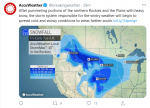
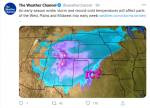
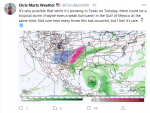
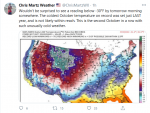












 LOL
LOL
